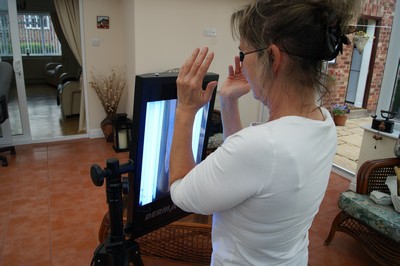Narrowband UVB Hand-held Lamp for Psoriasis, Vitiligo and Eczema
Here at MBS, we offer a Narrowband UVB Hand-held Lamp ideal for the treatment of psoriasis, vitiligo and eczema. Our range of Narrowband UVB lamps use the highest quality technology, each being fitted with Philips PL01 Narrowband Tubes, the very same used in the NHS, dermatology clinics and hospitals. So, if you’re affected by localized vitiligo, eczema or psoriasis, our light therapy units may be the ideal solution.
Our hand-held units are designed to focus Narrowband UVB light on areas where the skin condition is extremely localised. For example, small areas on the hands, nails, face, feet, ears etc. For eczema and psoriasis on the scalp, the hand-held units are provided with a comb accessory which makes them very effective in treating the condition on the scalp & at the hairline, beyond the hairline to the forehead, on the back of the neck and around the ears.
